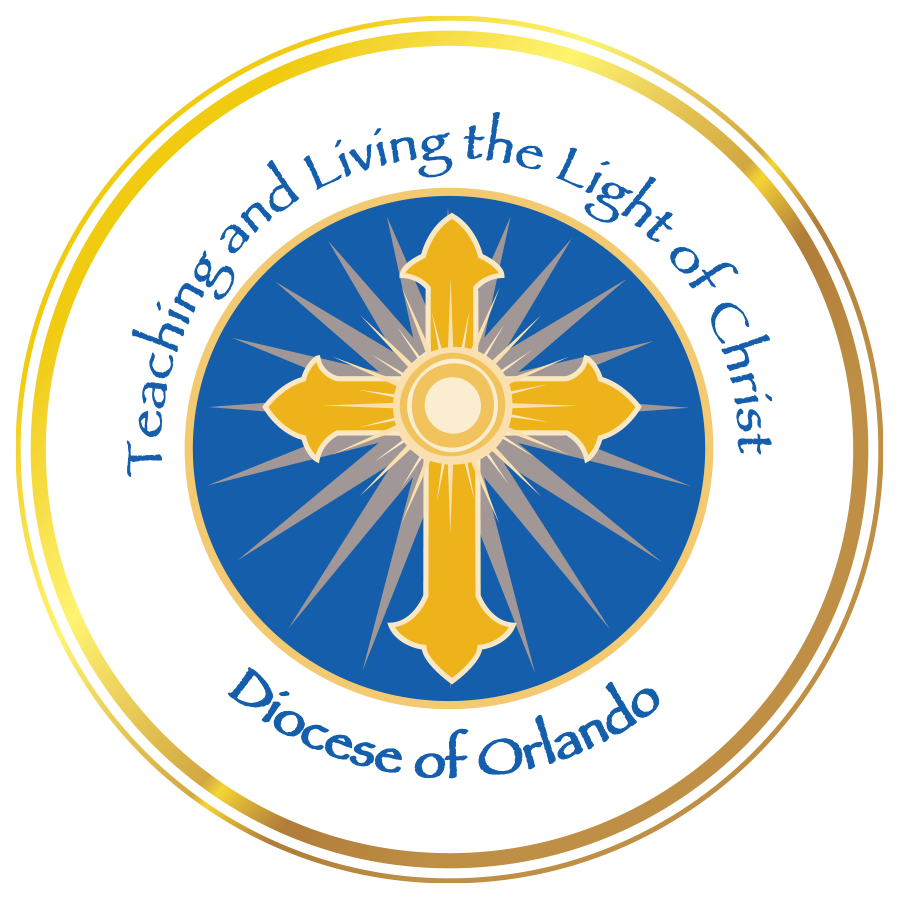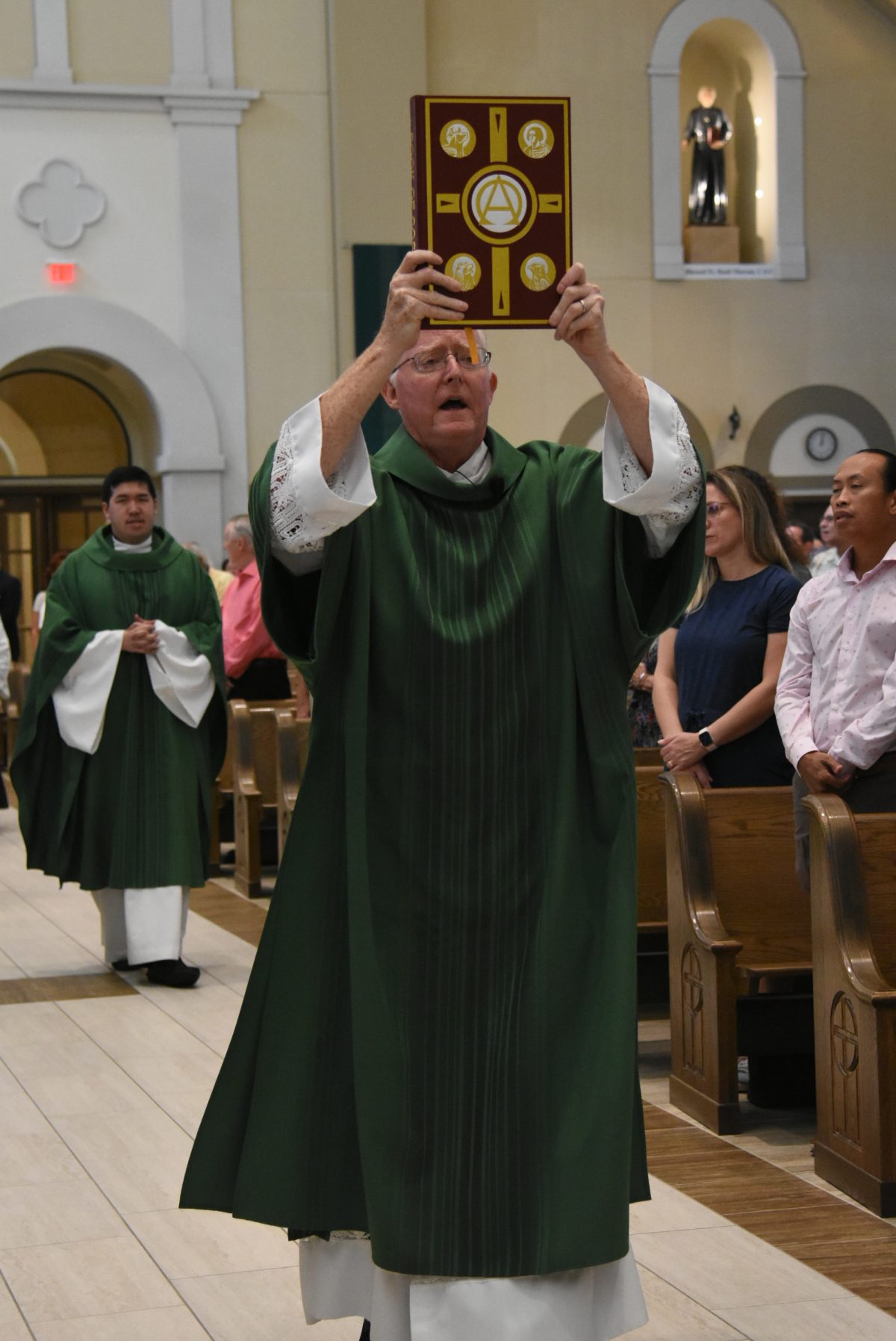ORLANDO I The Catechism of the Catholic Church states that “on Sundays and other holy days of obligation the faithful are bound to participate in the Mass.” However, the Mass is much more than a sacred obligation. It is the memorial in which the Sacrifice of the Cross of Jesus is perpetuated, and the sacred banquet of communion with the Lord’s Body and Blood. The
celebration of the Eucharistic Sacrifice is wholly directed toward the intimate union of the faithful with Christ through Communion.
As Catholics, understanding the Mass is essential to understanding our faith. To help Catholics obtain a greater awareness of what the Mass really means and to help Catholics participate more fully in the liturgy, we begin a five-part series, “About
the Mass.”
Much of the information in this series is found in the General Instruction of the Roman Missal (GIRM). This document can be found online and is contained in the English translation of the Roman Missal, Third Typical Edition.
THE INTRODUCTORY RITES
The beginning of the Mass is called the introductory rites. In a sense, these rites help us to “become” Church — to be the community of God’s people. St. John Paul II in his apostolic letter “Dies Domini” talks about the Mass and the gathering
of God’s people in this way: “It is also important to be ever mindful that communion with Christ is deeply tied to communion with our brothers and sisters. The Sunday Eucharistic gathering is an experience of brotherhood, which the celebration
should demonstrate clearly, while ever respecting the nature of the liturgical action.”
These words of Pope St. John Paul II are of great value to understanding the nature of the introductory rites, the first part of the Mass.
THE ENTRANCE
Strictly speaking, the entrance rite is the entrance of the priest- celebrant, deacon and other ministers into the worship space, taking their appropriate places among the gathered assembly. One could look at this action in a broader sense in that all who come together as God’s holy people are called to gather in a mindful way that reflects the dignity of such a gathering. This is also a time to transition from the more individualistic sense of identity that is prevalent in secular culture to the communal sense of identity that the Mass demands and deserves.
Upon entering the church building there are many signs and symbols that help us to form a communal identity. We greet one another. Maybe not exactly the way St. Paul writes in Romans 16 “with a holy kiss,” but perhaps with a holy smile or a holy bow. This greeting signifies our reverence for each person’s human dignity. We place our hand into the holy water, which recalls our Baptism into Christ and His Church, making the sign of the cross over our body. From this point, with this simple gesture and prayer, all that we do in this gathering is rooted in our life in the Holy Trinity.
Making our way to our seat we stop and bow to the altar which is the sign and symbol of Christ who showed Himself to be priest, altar and lamb of sacrifice. If the tabernacle is present behind the altar or in the Church sanctuary, then it is proper to genuflect in the direction of the tabernacle.
Most people or at least many say some of their personal prayers once they enter the pew or seat. They may kneel or sit. This is a popular practice that many use to continue to place themselves in the presence of God or to reflect upon what is about to occur in this gathering of God’s people and how they might enter it more profoundly.
The priest-celebrant, deacon and other ministers enter the Church led by the cross and flanked by two candles. The procession is accompanied by an entrance chant or musical selection that expresses praise and thanksgiving in the communal context or the liturgical season or feast being celebrated.
The Book of the Gospels is carried by the deacon or in his absence one of the lectors. It is placed upon the altar from where it will be retrieved immediately before the proclamation of the Gospel. Placement of the Book of Gospels upon the altar serves as a symbolic connection between the Liturgy of the Word and the Liturgy of the Eucharist.
The altar is venerated with a kiss by the priest-celebrant and deacon, again, showing reverence for the symbol of Christ which stands at the focal point of this gathering.
THE SIGN OF THE CROSS
The priest leads the congregation in prayer with the sign of the cross. Making this gesture not only signifies who we are and in whom we have our being, but also in whose name, Father, Son and Holy Spirit, we commit ourselves and the holy actions in which we are about to participate.
THE GREETING
The priest celebrant who represents the “head” of the body of Christ greets the members with, “The Lord be with you.” This greeting is based upon the greeting of St. Paul found in his letters which affirms the words of Christ Himself, “I am with you until the end of the age.” The assembly responds with, “And with your Spirit,” signifying the unique place the priest has been
given as one who acts in the person of Christ. Ultimately, it is Christ the High Priest who leads us and the Holy Spirit who guides and inspires these holy actions.
THE PENITENTIAL ACT
The gathering of God’s holy people continues to dispose themselves to listen properly to God’s word and to celebrate the Eucharist worthily. As a pilgrim, people who are continually being reconciled to God, we recognize our faults and failings.
We put the words upon our lips that reflect a humble and contrite heart. This is most commonly done through the recitation of a general confession (the Confiteor), which begins with the words “I confess to Almighty God and to you my brothers
and sisters.” In this prayer, we recognize that our sinfulness not only separates us from God but also from each other. We call upon the saints in heaven and particularly the Blessed Virgin Mary, Queen of the Saints, to pray for us that we may someday share in the glory that is theirs. The Kyrie follows unless an alternate form of the penitential act is used that incorporates the people’s response “Kyrie eleison” or “Lord have mercy.”
THE GLORIA
Having prepared through common song as members of God’s holy people and recognizing our own human frailty and the need
for forgiveness and mercy, we give glory to the triune God in the ancient hymn of praise. Beginning with words of St. Luke’s Gospel, “Glory to God in the highest and on earth peace to people of good will,” we echo the song of the angels in heaven that was heard at the birth of Jesus Christ heralding the dawn of salvation. The Gloria is to be sung on Sundays except during the seasons of Advent and Lent.
THE COLLECT
In the collect, the priest celebrant begins with the invitation, “Let us pray,” followed by a marked period of silence. During that time we bring our hopes, our desires, our trials, our triumphs before God in a prayer that is rooted first in thanksgiving and then in petition. After the brief period of silence the priest celebrant “collects” all of the prayers voiced in the hearts of the members with a formal prayer. The prayer begins by addressing God and recalling His saving activity throughout salvation history. Then after thanking God for His saving deeds, we express our faith that God continues to act in our lives today, therefore we make a request or petition. Then as all prayer is accomplished through Christ in the power of the Holy Spirit, we pray through Christ Our Lord. The assembly assents by saying, “Amen.”
Now we have prepared for our encounter with Christ in the proclamation of the word and in the Eucharist. Our prayer has formed us into the Body of Christ, ready to listen and respond to God.
By Bruce Croteau, Special to the Florida Catholic and diocesan director of liturgy, reprint from 2014 issue, November 22, 2022
Read Part Two: The Meaning of the Mass: Christ present in the word proclaimed to the assembly

